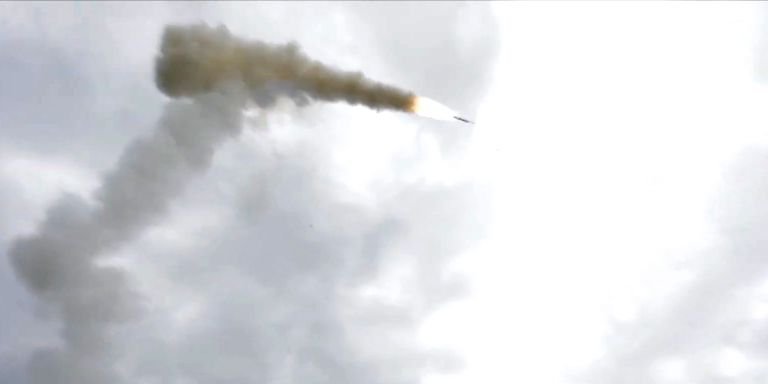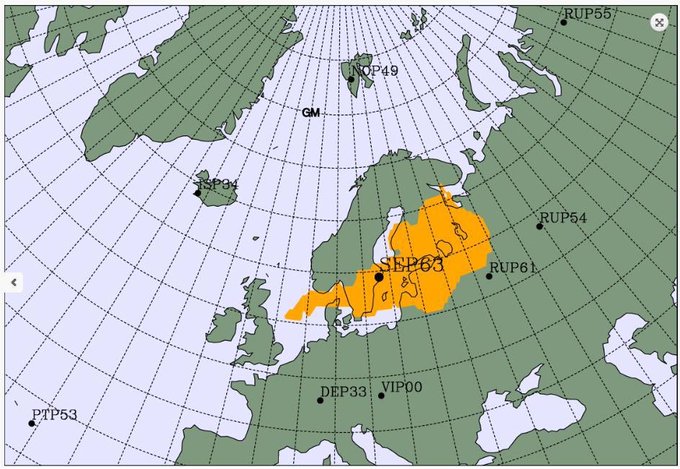Post by bazooka on Jul 8, 2020 9:25:12 GMT
Radiation Leak in Europe Points to a Possible Russian Weapons Test
This isn't the first time Europe's detected radiation leaks likely originating from Russia.
BY KYLE MIZOKAMI

Radiation detectors across northern Europe have picked up a short-lived, non-dangerous release of radioactivity experts believe came from Russia. Authorities believe the leak, which was first detected in early June, is coming from western Russia. One possibility is that the test is in some way related to a new nuclear-powered cruise missile, which caused an accident in 2019 and several deaths.
The Associated Press reports that officials in Finland, Norway, and Sweden detected man-made radionuclides—that is, radionuclides that do not naturally occur in nature. According to the Barents Observer, Iodine 131 was detected by air monitoring stations at Svanhovd and Viksjøfjell, Norway, as well as a nuclear weapons monitoring facility at Svalbard. Analysis by the Dutch National Institute for Public Health indicates the source of the radiation is western Russia.
Iodine 131 is a radioisotope created as a result of nuclear fission, which is why scientists believe the radiation release is the result of an accident at a nuclear facility. According to the CDC, exposure to large amounts of Iodine 131 can cause burns to the eyes and skin. Iodine 131 ingested into the human body accumulates in the thyroid gland, causing thyroid cancer. Iodine 131 has a half-life of eight days, meaning it can disappear from the environment relatively quickly.
The amount of Iodine 131 released is considered “tiny” and not dangerous.
Finnish authorities also reportedly detected small levels of cobalt, ruthenium and cesium in mid-June. In late June, the Comprehensive Nuclear Test Ban Treaty Organization, an international organization that monitors the globe for signs of nuclear weapons tests, detected radioactive isotopes across southern Sweden.

This content is imported from Twitter. You may be able to find the same content in another format, or you may be able to find more information, at their web site.
Russia has denied it is the source of the radiation, stating its two nearest nuclear power plants are operating normally. Russia however has a history of radiation leak—and covering them up. An October 2017 leak released “extremely high levels” of a radioactive isotope in Russia, an incident Moscow never did own up to. In 2019, U.S. intelligence determined that another radiation leak was the result of the Russian government recovering the remains of the Burevestnik nuclear-powered cruise missile. Unlike other cruise missiles, which use turbine engines that run on aviation fuel, first-of-its-kind Burevestnik uses an onboard nuclear power plant for propulsion.
Even if nearby Russian nuclear power plants are still functioning properly the radiation came from somewhere. Russia is still committed to developing Burevestnik and the missile's development has been marred by accidents and delays.
This isn't the first time Europe's detected radiation leaks likely originating from Russia.
BY KYLE MIZOKAMI

first oniks cruise missile launch in chukotka, russiaRUSSIAN DEFENCE MINISTRYGETTY IMAGES
Radiation monitoring stations across northern Europe have detected above normal—but still safe—levels of radioactivity.
One of the radioactive isotopes detected, Iodine 131, is generated by nuclear fission.
Russia has denied being the source of the radioactivity, but the country had similar leaks in 2017 and 2019. The radiation may be due to the testing of a new nuclear-powered cruise missile.
The Associated Press reports that officials in Finland, Norway, and Sweden detected man-made radionuclides—that is, radionuclides that do not naturally occur in nature. According to the Barents Observer, Iodine 131 was detected by air monitoring stations at Svanhovd and Viksjøfjell, Norway, as well as a nuclear weapons monitoring facility at Svalbard. Analysis by the Dutch National Institute for Public Health indicates the source of the radiation is western Russia.
Iodine 131 is a radioisotope created as a result of nuclear fission, which is why scientists believe the radiation release is the result of an accident at a nuclear facility. According to the CDC, exposure to large amounts of Iodine 131 can cause burns to the eyes and skin. Iodine 131 ingested into the human body accumulates in the thyroid gland, causing thyroid cancer. Iodine 131 has a half-life of eight days, meaning it can disappear from the environment relatively quickly.
The amount of Iodine 131 released is considered “tiny” and not dangerous.
Finnish authorities also reportedly detected small levels of cobalt, ruthenium and cesium in mid-June. In late June, the Comprehensive Nuclear Test Ban Treaty Organization, an international organization that monitors the globe for signs of nuclear weapons tests, detected radioactive isotopes across southern Sweden.
22 /23 June 2020, RN #IMS station SEP63 #Sweden🇸🇪 detected 3isotopes; Cs-134, Cs-137 & Ru-103 associated w/Nuclear fission @ higher[ ] than usual levels (but not harmful for human health). The possible source region in the 72h preceding detection is shown in orange on the map.

Russia has denied it is the source of the radiation, stating its two nearest nuclear power plants are operating normally. Russia however has a history of radiation leak—and covering them up. An October 2017 leak released “extremely high levels” of a radioactive isotope in Russia, an incident Moscow never did own up to. In 2019, U.S. intelligence determined that another radiation leak was the result of the Russian government recovering the remains of the Burevestnik nuclear-powered cruise missile. Unlike other cruise missiles, which use turbine engines that run on aviation fuel, first-of-its-kind Burevestnik uses an onboard nuclear power plant for propulsion.
Even if nearby Russian nuclear power plants are still functioning properly the radiation came from somewhere. Russia is still committed to developing Burevestnik and the missile's development has been marred by accidents and delays.











